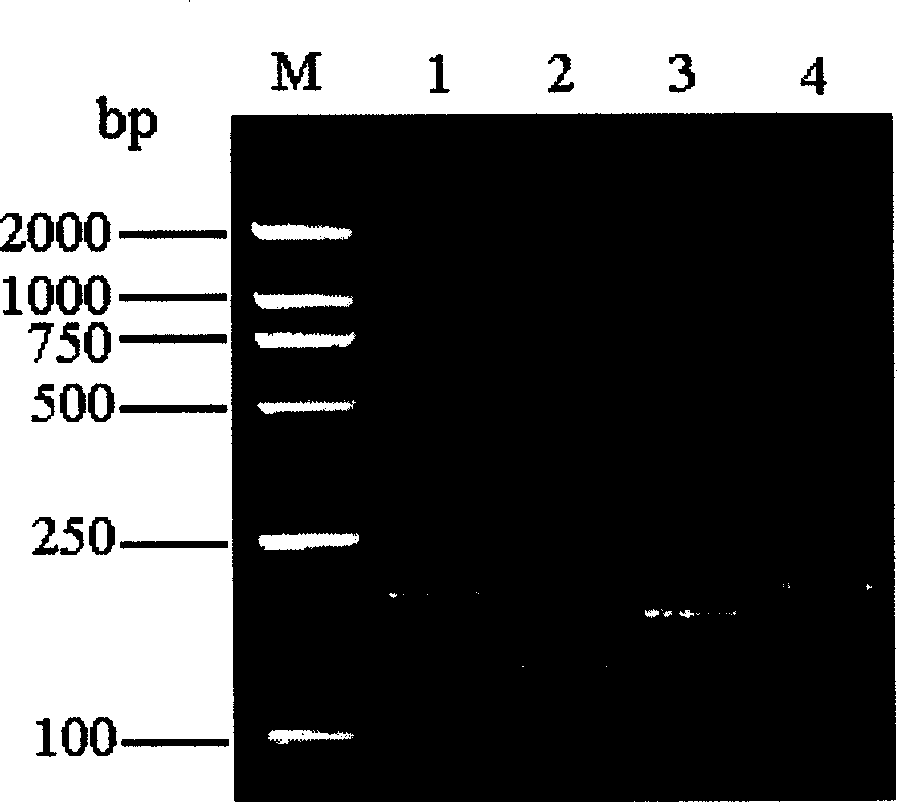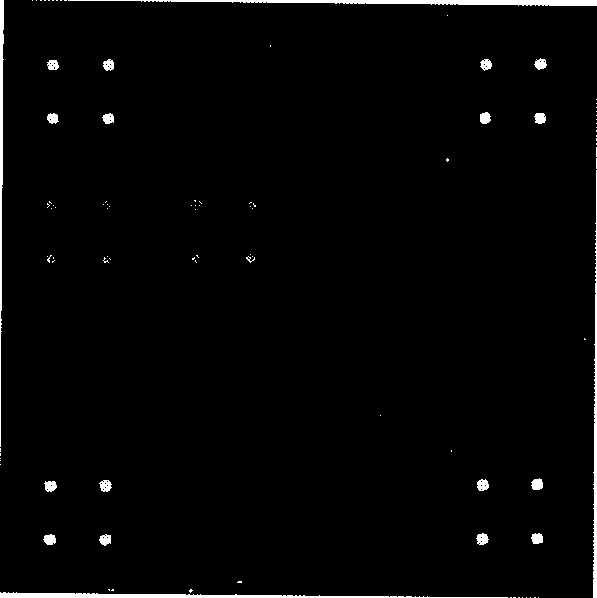Glass gene chip for simultaneous detection of Group A, B and C human rotaviruses and the prepn and application
A rotavirus and gene chip technology, applied to biochips and diagnostic reagents, glass gene chips and preparation of three groups of human rotaviruses in C, and simultaneous detection of A and B fields, which can solve the problem of three groups of rotaviruses that cannot be detected at one time. Problems such as low virus detection sensitivity
- Summary
- Abstract
- Description
- Claims
- Application Information
AI Technical Summary
Problems solved by technology
Method used
Image
Examples
Embodiment 1
[0102] Embodiment 1 Preparation of a glass gene chip for simultaneous detection of A, B, and C three groups of human rotaviruses according to the present invention
[0103] (1) Glass slide treatment: take a conventional glass slide bare chip without any chemical modification and immerse it in a 10% glutaraldehyde aqueous solution for 1 hr with a volume percentage concentration to obtain an aldylated glass slide as the substrate of the chip;
[0104] (2) Determination of probes: According to the gene sequences of three groups of human rotaviruses A, B and C, 6 human rotavirus group-specific detection probes were selected and determined, and the gene sequences thereof are:
[0105] ProbeA1: 5′-ATTTATTGAATGCTTCGATAT-3′
[0106] ProbeA2: 5'-ACTGGTGAGTGGATTGTTTGA-3'
[0107] ProbeB1: 5′-ATCCCATTTGAGTAAATTCAG-3′
[0108] ProbeB2: 5′-ATGATAATTCAGCCAAGCC-3′
[0109] ProbeC1: 5′-CTGTATTAGCTACATGACCGT-3′
[0110] ProbeC2: 5′-AGCTATTGGAGTTTGGTAGTT-3′
[0111] 1 positive control prob...
Embodiment 2
[0126] Example 2 Detection of Group A Human Rotavirus by Using the Glass Gene Chip of the Present Invention to Simultaneously Detect Three Groups of Human Rotaviruses A, B and C
[0127] (1) Carry out cell culture on human rotavirus standard strains RV5 and Wa strains of human group A, extract viral RNA in the supernatant of the culture medium, and use Takara company RNA PCR (AMV) VER 2.1 kit instructions to reverse the RNA record the response. Then set up the PCR system: 25μl reaction system contains: 1.5μl MgCl 2 , 2.5μl 10×PCR buffer (without Mg -2 ), 2.0μldNTP (2.5mmol / L), 16.4μl sterile double distilled water, 0.125μl Taq enzyme (5U / μl), 1.0μl primer mix (Tamra-PAu, PAd, Tamra-PBu, PBd, Tamra-PCu, PCd Each 10 μmol / L), 0.5 μl RT product.
[0128] (2) Electrophoretic detection of PCR amplification products
[0129] Take 5 μl of the PCR product, and observe the results after electrophoresis with 1% agarose gel containing ethidium bromide, as shown in FIG. 2 .
[0130] (...
Embodiment 3
[0134] Example 3 Detection of Group B Human Rotavirus Using the Glass Gene Chip for Simultaneous Detection of Three Groups A, B, and C Human Rotaviruses of the Present Invention
[0135] (1) Establish a PCR amplification system for the human group B human rotavirus target nucleic acid sequence
[0136] 25μl reaction system contains: 1.5μl MgCl 2 , 2.5μl 10×PCR buffer (without Mg-2 ), 2.0μldNTP (2.5mmol / L), 16.4μl sterile double distilled water, 0.125μl Taq enzyme (5U / μl), 1.0μl primer mix (Tamra-PAu, PAd, Tamra-PBu, PBd, Tamra-PCu, PCd Each 10μmol / L), 0.5μl template.
[0137] The PCR program is: 94. Pre-denaturation at ℃ for 2 minutes, followed by a cycle of 94°C for 45 sec, 52°C for 45 sec, and 72°C for 1 min. After 30 cycles, extend at 72°C for 5 min.
[0138] (2) Electrophoretic detection of PCR amplification products
[0139] Take 5 μl of the PCR product, and observe the results after electrophoresis with 1% agarose gel containing ethidium bromide, as shown in FIG. 2 ....
PUM
 Login to View More
Login to View More Abstract
Description
Claims
Application Information
 Login to View More
Login to View More - R&D
- Intellectual Property
- Life Sciences
- Materials
- Tech Scout
- Unparalleled Data Quality
- Higher Quality Content
- 60% Fewer Hallucinations
Browse by: Latest US Patents, China's latest patents, Technical Efficacy Thesaurus, Application Domain, Technology Topic, Popular Technical Reports.
© 2025 PatSnap. All rights reserved.Legal|Privacy policy|Modern Slavery Act Transparency Statement|Sitemap|About US| Contact US: help@patsnap.com



